Time for Report Cards!
http://www.inspiremeasap.blogspot.com/2011/03/time-for-report-cards.html
learning - sharing - connecting
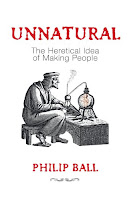
In Unnatural, science writer Philip Ball explores the history of our fascination with — and fear of — creating artificial people, from ancient folklore to today. Tracing a clear path from medieval alchemists' homunculi to routine assisted conception is a feat. Through his impeccable research, Ball successfully argues that the tenacious myths of the past that surround the making of people or 'anthropoeia' (his coinage) affect life-science research today.
Ball traces the concept that nature is good and techne is bad back to Aesop's and Ovid's Prometheus, maker of humanity from earth and water, and provider of technology to man. After Prometheus came recipes for making miniature humans called homunculi. Starting in the Middle Ages, initially as a cure for childlessness, the art of homunculi-making evolved into a debate over whether the miniscule men had a soul. Johann Wolfgang von Goethe's nineteenth-century poetic play Faust raises this spectre. Deploying the biological equivalent of alchemy, Faust's former assistant, Wagner, creates his homunculus: a tiny super-being with magical powers who is trapped in a glass vessel, doomed to remain captive without the capacity to become a proper man. In 1818, Mary Shelley published Frankenstein, appropriately subtitled 'The Modern Prometheus', in which her eponymous scientist unintentionally constructs a monster, by unexplained means, from human parts. There are also golems — the animated beings of Jewish folklore, made from clay and brought to life by religious magic for the purpose of imitating God's creation.
Ball distills out of all this a set of universal myths surrounding anthropoeia that are deeply ingrained in society, resulting in the widely held view that artificial people-making is unnatural and deeply wrong — heretical, as in the book's subtitle. His thesis is that humans fear that uncovering forbidden knowledge will result in either divine or other retribution. Prometheus, Faust and Frankenstein all pay a heavy price for their transgressions into anthropoeia. Even today, Ball points out, societal and cultural debate is pervaded by the belief that technology is intrinsically perverting and thus carries certain penalty.But his point is that we are getting to a place where some aspects of 'anthropoeia' (I do like this new word...) are becoming reality - and yet a well-informed debate has not taken place. In particular
As scientific knowledge accumulates and makes some acts of anthropoeia more and more plausible, the challenge for the public will be to separate fact from fiction. For example, Ball ends his literary tour with Aldous Huxley's novel Brave New World. In 1931, the book's in vitro production of embryos in the Central London Hatchery and Conditioning Centre was pure conjecture by Huxley, based on the scientific forecasts of his day. Today, in vitro fertilization (IVF) is mainstream medicine — more than four million babies have been born using this technique. But the technology still has its critics, including within the Vatican. On the awarding of the 2010 Nobel Prize in Physiology or Medicine to IVF pioneer Robert Edwards, Ignacio Carrasco de Paula, head of the Pontifical Academy for Life, stated that the award was “completely out of order”, as without IVF there would be no market for human eggs “and there would not be a large number of freezers filled with embryos in the world”.
...
The challenge for innovative biological research is that, until it translates into real benefits, it is often viewed with mistrust and worse-case scenario imagery. In reality, once products and services are released into society, they are adopted by a few enthusiasts and then, if successful, by the wider community. In the 1970s, for example, anxieties were rife about the unfounded threat that IVF posed to human welfare and dignity, let alone whether a test-tube baby could ever be wholly human. Yet the first IVF baby, Louise Brown, was just like everyone else, so IVF became socially acceptable. We cannot predict whether human cloning will proceed in the same manner, so the past is our only pointer.
 Hello from David & Sheri Burns from Long Lane Honey Bee Farms in Central Illinois. It’s nice to be with you again for another beekeeping lesson.
Hello from David & Sheri Burns from Long Lane Honey Bee Farms in Central Illinois. It’s nice to be with you again for another beekeeping lesson. 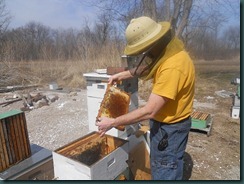 strong and healthy in Illinois after such a bad winter. We do not treat our colonies and they go through the winter on screen bottom boards. Again, this year there was no difference between the hives that we wrapped and the ones we did not. Every year we provide larger upper openings for ventilation on our hives and each year they do better!
strong and healthy in Illinois after such a bad winter. We do not treat our colonies and they go through the winter on screen bottom boards. Again, this year there was no difference between the hives that we wrapped and the ones we did not. Every year we provide larger upper openings for ventilation on our hives and each year they do better!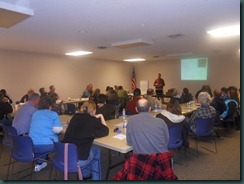
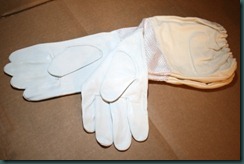 First, Bucko Goat Skin Beekeeping Gloves. Wow, what a nice glove! The goat skin is a better, less clumsy fit, and it has extended ventilated sleeves. We are selling these $5 cheaper than most places for only $15.
First, Bucko Goat Skin Beekeeping Gloves. Wow, what a nice glove! The goat skin is a better, less clumsy fit, and it has extended ventilated sleeves. We are selling these $5 cheaper than most places for only $15. 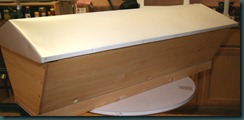 And for all of you Top Bar Hive Enthusiasts we are now selling TBHs!!! (Pretend you hear a loud crowd applauding). Do not be tricked by tiny TBHs made of plywood. This is a full 46” TBH made from 3/4” pine. Even the top is made with pine, and covered with aluminum. Comes with 30 top bars (frame starters) with wooden splines. This TBH also comes with a screen bottom board with a slide in board to open and close the bottom. This TBH also has three holes in the side and two follower boards. Stand and bees not included. Click on the image or click here to purchase your TBH. Have some fun with a Top Bar Hive!
And for all of you Top Bar Hive Enthusiasts we are now selling TBHs!!! (Pretend you hear a loud crowd applauding). Do not be tricked by tiny TBHs made of plywood. This is a full 46” TBH made from 3/4” pine. Even the top is made with pine, and covered with aluminum. Comes with 30 top bars (frame starters) with wooden splines. This TBH also comes with a screen bottom board with a slide in board to open and close the bottom. This TBH also has three holes in the side and two follower boards. Stand and bees not included. Click on the image or click here to purchase your TBH. Have some fun with a Top Bar Hive! A BEE-HAVER is someone who can say they “HAVE” bees but they do not want beekeeping to consume their time or interest, so they spend little to no time keeping bees, they simply have bees. That’s certainly one approach.
A BEE-HAVER is someone who can say they “HAVE” bees but they do not want beekeeping to consume their time or interest, so they spend little to no time keeping bees, they simply have bees. That’s certainly one approach.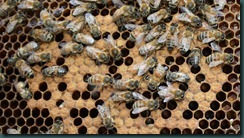 Most beekeepers would feel okay about this comb. The brood looks fine, though it is a small area of brood, it’s fall and queens are cutting back laying so it’s fine. But if we look closer we’ll several things that are wrong, this hive will not make it through the winter. In fact, nothing was done to my friend’s hive and it died in the winter from the major two factors visible upon the above image, both could have been prevented. So let’s zoom in.
Most beekeepers would feel okay about this comb. The brood looks fine, though it is a small area of brood, it’s fall and queens are cutting back laying so it’s fine. But if we look closer we’ll several things that are wrong, this hive will not make it through the winter. In fact, nothing was done to my friend’s hive and it died in the winter from the major two factors visible upon the above image, both could have been prevented. So let’s zoom in.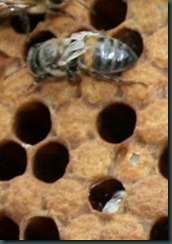 Do you see the two major problems? I’ll give you a hint. Look at the bees, not the brood. Ah ha…see it now? Among several female workers we see DWV, deformed wing virus and one has K-wing. Let me zoom in and show you.
Do you see the two major problems? I’ll give you a hint. Look at the bees, not the brood. Ah ha…see it now? Among several female workers we see DWV, deformed wing virus and one has K-wing. Let me zoom in and show you.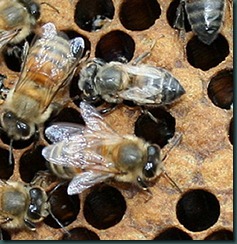
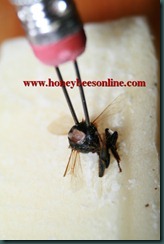 Most beekeepers do not have a microscope or the patience to pull out the bee’s trachea tube and look for the tiny tracheal mite in the tracheal tube, a bit smaller than a speck of a tiny dust particle. But you can buy a microscope and learn to do the dissection yourself or send in your bees to the Beltsville, Maryland Bee Lab. So here I have pinned down a bee, removed the head and first two legs and collar to pull out the trachea tube. It is lots of work but I never found any. Two pins in a pencil eraser works well to hold the bee in position during surgery.
Most beekeepers do not have a microscope or the patience to pull out the bee’s trachea tube and look for the tiny tracheal mite in the tracheal tube, a bit smaller than a speck of a tiny dust particle. But you can buy a microscope and learn to do the dissection yourself or send in your bees to the Beltsville, Maryland Bee Lab. So here I have pinned down a bee, removed the head and first two legs and collar to pull out the trachea tube. It is lots of work but I never found any. Two pins in a pencil eraser works well to hold the bee in position during surgery.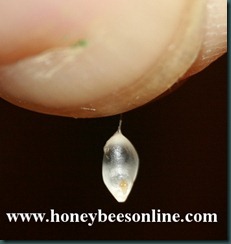 One thing in particular that was interesting was the honey stomach. Where else, but here, will you finally see what a honeybee’s honey stomach looks like? Rather than thinking of it as a human’s digestive stomach, think of it as a flexible holding tank. I went ahead and dissected the bee and pulled out a nearly fully expanded honey stomach, and I’m holding it between my fingers.
One thing in particular that was interesting was the honey stomach. Where else, but here, will you finally see what a honeybee’s honey stomach looks like? Rather than thinking of it as a human’s digestive stomach, think of it as a flexible holding tank. I went ahead and dissected the bee and pulled out a nearly fully expanded honey stomach, and I’m holding it between my fingers. "Google Trends allows us to get a sense of atmospherics," Koehler-Derrick says. "There are approximately 16 million Internet users in Egypt. Now, this is undoubtedly a demographic that is biased toward younger people. If you put Google's market share at 10 percent, which I think is absurdly low, then that is 1.6 million users that we have essentially surveyed for 30 days."
He and Goldstein searched Google using Arabic because that would better measure what locals are interested in. Using the search term "Tunis," they wanted to see how many Egyptians were following the demonstrations in Tunisia. They compared the number of Google searches for "Tunis" with the number of Google searches for pop stars in Egypt.
"Typically, as I think you'd find in the United States, pop stars trump almost any search you can think of," Koehler-Derrick says. "But the search for Tunis prior to the demonstrations that kicked off in late January were surprisingly high."Wait a minute. Even a small Charlie Sheen rant can throw all this statistics out the window. Now this particular story is mostly about intelligence. But it also mentioned this fascinating use of Google Trends for predicting pandemics:
Google Trends is basically a way of looking at what people are focusing on by mapping out their Google searches. Marketing firms have been using Google Trends for some time. The government has, too. Back in 2009, during the swine flu epidemic in the U.S., the National Institutes of Health used Google Flu Trends to track outbreaks of the disease.
It turns out that when people started to feel feverish and nauseous, they would go to Google to check out their symptoms. While it wasn't a perfect indicator, Google Flu Trends often beat government predictions about flu outbreaks by a week or more. Imagine using the Internet to do the same thing in predicting political unrest.Fascinating! I don't know how robust these connections are, nevertheless, this is really interesting.
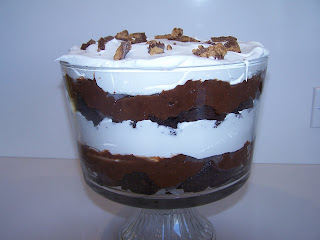
NYU's Himelberg Speaker Series brought to you by the NYU Stern Berkley Center for Entrepreneurship and Innovation with help from Tech@NYUColumbia, Weds. 3/30 6-9pm - Discussion with Eric Ries, brought to you by the Columbia Venture Community
The Columbia Venture Community and the Columbia Journalism School are pleased to bring Eric Ries to campus on Wednesday, March 30th at 6pm for an evening of frank conversation.These events all have limited availability:
 Things in the Middle East are still in turmoil. I'm sure everyone is getting a tutorial on the complexity of local politics. Bahrain, Yemen, Syria - all with very different types of uprisings, and none similar to Tunisia and Egypt. And then, of course, you have Gadhafi and his unique brand of brutal craziness. Nidhal and I have written multiple posts here on Tunisia and Egypt (for example, see On the use of social media in the uprisings in the Middle East, Statistical analysis to predict the next revolution(s), How important is the internet in Tunisia uprising?
Things in the Middle East are still in turmoil. I'm sure everyone is getting a tutorial on the complexity of local politics. Bahrain, Yemen, Syria - all with very different types of uprisings, and none similar to Tunisia and Egypt. And then, of course, you have Gadhafi and his unique brand of brutal craziness. Nidhal and I have written multiple posts here on Tunisia and Egypt (for example, see On the use of social media in the uprisings in the Middle East, Statistical analysis to predict the next revolution(s), How important is the internet in Tunisia uprising?Where did this wave of anger come from? Why did it begin in Tunisia, and what does it mean? FP's special report starts with a revelatory first chapter that shows how the revolutionary rumblings were ignored, dating back to Issandr El Amrani's prescient warning to Barack Obama in January 2010: Egypt, he wrote, could be the ticking time bomb that overwhelms your international agenda. The coverage also includes a dramatic day-by-day retelling of the battle to hold Tahrir Square, insider accounts of Washington's flip-flopping and struggle to keep up with events, and some of the world’s leading authors and experts, from James Traub to Gary Sick to Robert D. Kaplan, on where we go from here.
Consider it a guidebook for these revolutionary times.You can find the table of contents here. You can buy it here.
 Jang-E-Jamal Or Haqeeqat Full History in Urdu
Jang-E-Jamal Or Haqeeqat Full History in Urdu
 Song: Nephi's Courage
Song: Nephi's Courage
.jpg) Rafa Yadain Urdu
Rafa Yadain Urdu
 شرح حلية طالب العلم للشثري PDF
شرح حلية طالب العلم للشثري PDF
 Song: Holding Hands Around the World
Song: Holding Hands Around the World
 Dua Sirf Aik Allah Se (Quraan Our Hadees Se Sabit)
Dua Sirf Aik Allah Se (Quraan Our Hadees Se Sabit)
 Song: Samuel Tells of the Baby Jesus
Song: Samuel Tells of the Baby Jesus
 Cute Muslim Girls
Cute Muslim Girls

0 comments:
welcome to my blog. please write some comment about this article ^_^